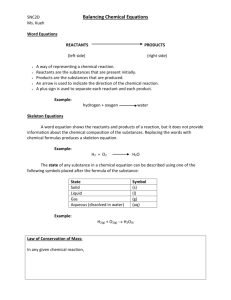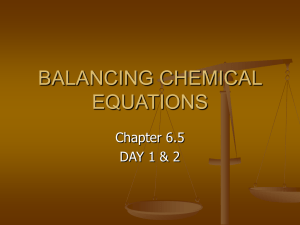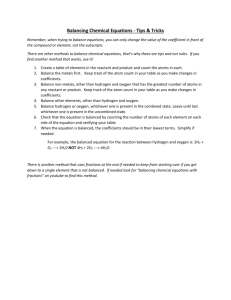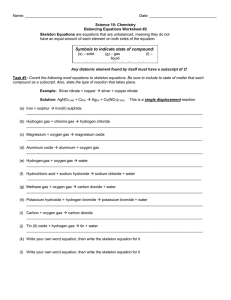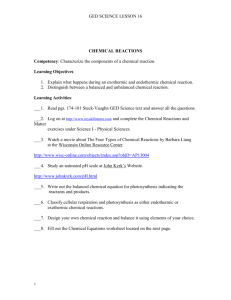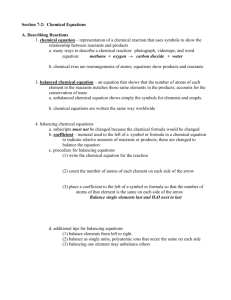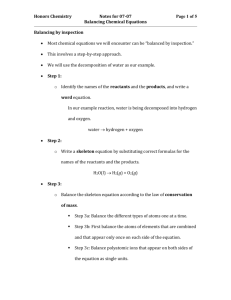Balancing chemical equations 2016
advertisement
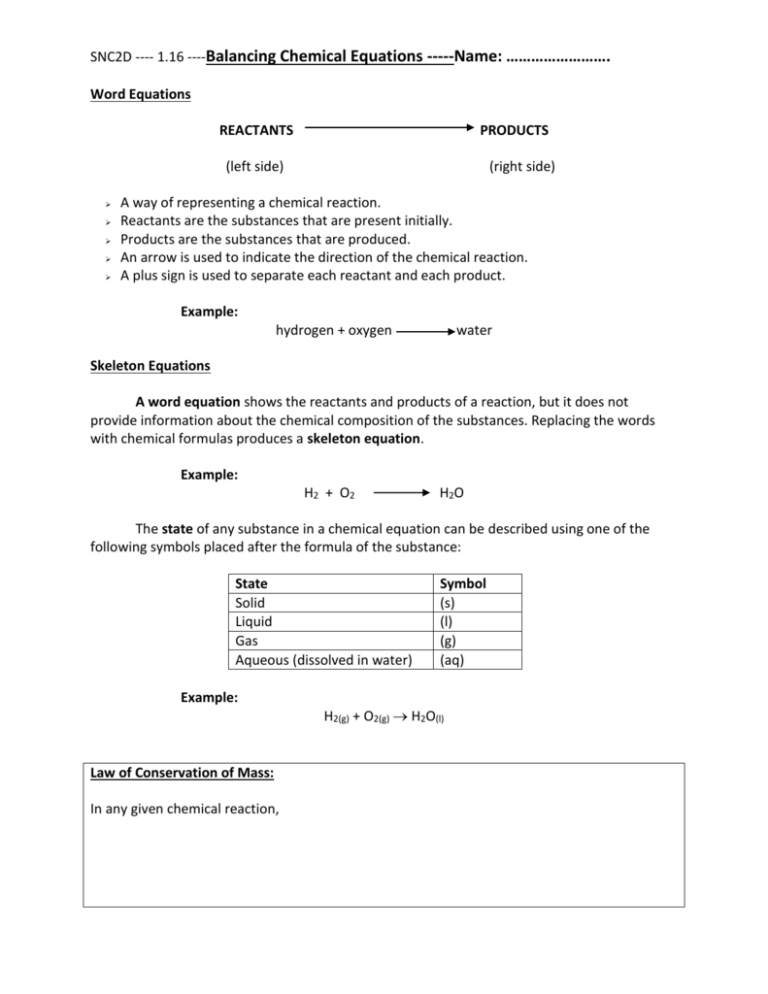
SNC2D ---- 1.16 ----Balancing Chemical Equations -----Name: ……………………. Word Equations REACTANTS PRODUCTS (left side) (right side) A way of representing a chemical reaction. Reactants are the substances that are present initially. Products are the substances that are produced. An arrow is used to indicate the direction of the chemical reaction. A plus sign is used to separate each reactant and each product. Example: hydrogen + oxygen water Skeleton Equations A word equation shows the reactants and products of a reaction, but it does not provide information about the chemical composition of the substances. Replacing the words with chemical formulas produces a skeleton equation. Example: H2 + O2 H2O The state of any substance in a chemical equation can be described using one of the following symbols placed after the formula of the substance: State Solid Liquid Gas Aqueous (dissolved in water) Symbol (s) (l) (g) (aq) Example: H2(g) + O2(g) H2O(l) Law of Conservation of Mass: In any given chemical reaction, SNC2D ---- 1.16 ----Balancing Chemical Equations -----Name: ……………………. Balanced Chemical Equations Although the skeleton equation shows the composition of each substance, it does not show the number of reactants or products. A balanced chemical equation demonstrates the law of conservation of mass, which requires the same number of atoms of each element on both sides of the chemical equation. Example: 2H2(g) + O2(g) 2H2O(l) How to Balance a Chemical Equation Example 1 Write the balanced chemical equation for the reaction between aluminum and oxygen gas to produce aluminum oxide. Step 1: Write the word equation (if necessary) Aluminum + Oxygen Aluminum oxide Step 2: Write a skeleton equation Al(s) + O2(g) Al2O3(s) Step 3: a) Draw symbols below each formula to represent the exact number of atoms that are present on either side. Insert numbers infront of each element/compound to balance the number of atoms of each on each side. Al(s) + O2(g) Al2O3(s) j Page 2 of 3 SNC2D ---- 1.16 ----Balancing Chemical Equations -----Name: ……………………. Step 4: Make sure to check when finished. Example 2 Aluminum oxide + Calcium Calcium oxide + Aluminum Helpful Tips 1. Remember, when trying to balance equations, you can only change the value of the coefficient in front of the compound or element, not the subscripts. What do the numbers mean? Coefficient 3H2O Subscript 2. Balance the element, other than hydrogen and oxygen, which has the greatest number of atoms in any reactant or product. 3. Balance other elements, other than hydrogen and oxygen. 4. Balance oxygen or hydrogen, whichever one is present in the combined state (with something else i.e. H2S). Leave until last whichever one is present in the uncombined state (by itself i.e. H2). 5. Check that the equation is balanced by counting the number of atoms of each element on each side of the equation. 6. When the equation is balanced, the coefficients should be in their lowest terms. For example, the balanced equation for the reaction between hydrogen and oxygen is: Correct 2H2 + O2 2H20 NOT Correct! 4H2 + 2O2 4H2O Page 3 of 3
